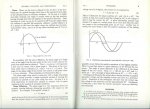- Location
- Wisconsin
- Occupation
- PE (Retired) - Power Systems
No Jim, even rbalex agrees that inverses cannot be in phase. It just shows that one expression is just as real as the other.
Besoeker said the voltages must be 'in-phase' in order to be paralleled.
Mivey posted a graphic of Vleft being connected in parallel with Vright.
Ergo, per Besoeker, they must be in-phase.
This gives us Vleft=Vright as opposed to -Vright.
Gar and Rattus jump in and say 'you fool - don't you see' we changed the direction of the arbitrarily assigned arrows, therefore what you see is Vleft@180? and Vright@0? which means they are inverses.
Ooops, now we have Vleft=-Vright: which totally contradicts what Besoeker said and Mivey drew.
Ahhh they say, but we can deal that, we will also assign subscripts that point in opposite directions, just like our arrows: Vleft=Vbn and Vright=Vnb. Now we have inverted our opposites, thus we subtract Vbn instead of adding Vnb because we are smart enough to know about double negatives.
So we are left with a "real" connection of (2) sets of [two voltages in parallel] connected in additive series and a "real" arbitrary assignment of voltage directions.
One is an actual physicality.
One is an actual mathematical manipulation.


